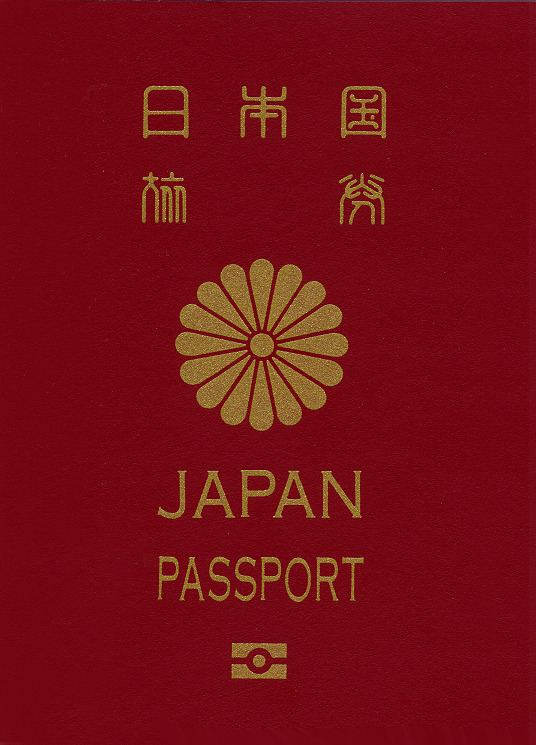Issued by Japan Purpose Identification | Type of document Passport | |
 | ||
Expiration 10 years or 5 years after acquisition for adults, 5 for ages under 19 | ||
Japanese passports are issued to Japanese citizens to travel outside Japan.
Contents
Types of passports
All Japanese passports issued after March 20, 2006 are biometric passports.
Physical appearance
Japanese passports have the Imperial Seal of Japan inscribed in the center of the front cover, with the Japanese characters reading Nipponkoku Ryoken (日本国旅券) inscribed above in seal script and its English translation JAPAN PASSPORT in Latin letters below the Seal. Ordinary passports valid for five years are in dark blue, and those valid for ten years are in crimson in color. Additionally, official passports are in dark green, and diplomatic passports in dark brown.
Identity information page
Also, beneath these is the machine readable zone.
Passport note
The passports contain a note from the issuing country that is addressed to the authorities of all other countries, identifying the bearer as a citizen of that country and requesting that he or she be allowed to pass and be treated according to international norms. The note inside of Japanese passports states:
In Japanese:
In English:
Language
Japanese passports are entirely printed in both Japanese and English, except for the note of caution that is found at the end of the passport (e.g. on page 51 of the ten-year biometric ordinary passport), which is only printed in Japanese. This note contains information about what the bearer should know when encountering various situations in a foreign country.
The surname, given name and other personalized mentions (like registered domicile) are only indicated in Latin uppercase letters. Japanese names are in principle transcribed according to the Hepburn romanization system, but exceptions are admitted in certain cases, notably when the name is the katakana transcription of a foreign name (Japanese spouse or Japanese child of a foreigner), in which case the original spelling of the name in the Latin alphabet may be used, only if you submit the official document with the original spelling issued by the government (passport etc.).
The signature may be written in any language and in any spelling the individual desires.
Visa requirements
In 2016, Japanese citizens had visa-free or visa on arrival access to 173 countries and territories, ranking the Japanese passport 5th in the world according to the Visa Restrictions Index.
